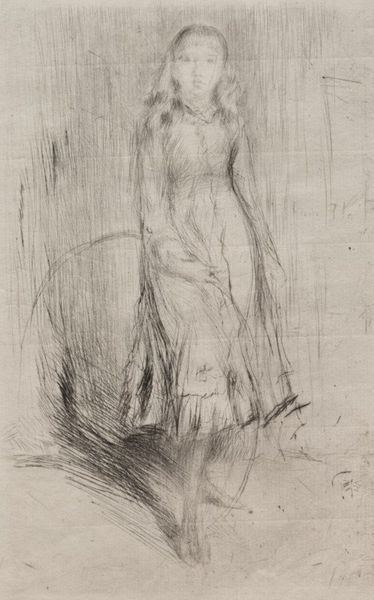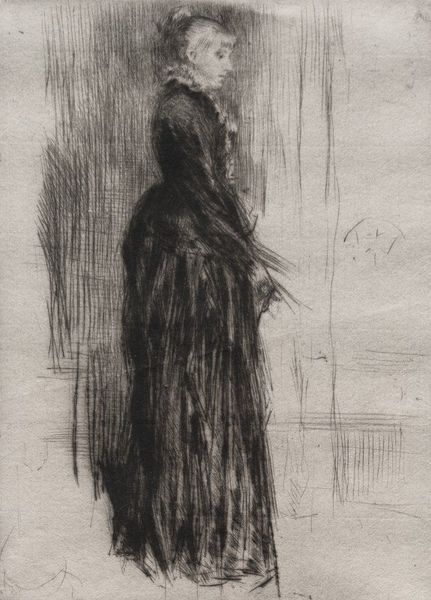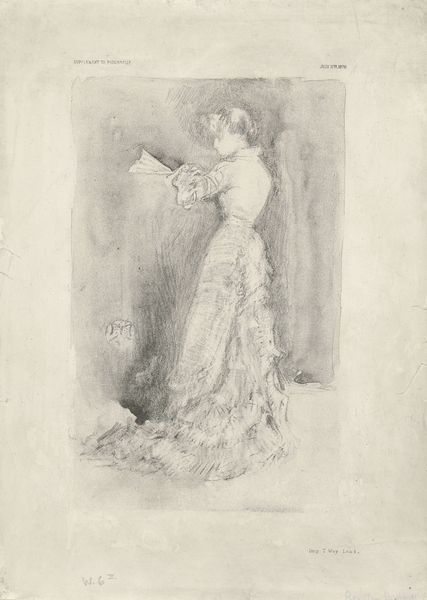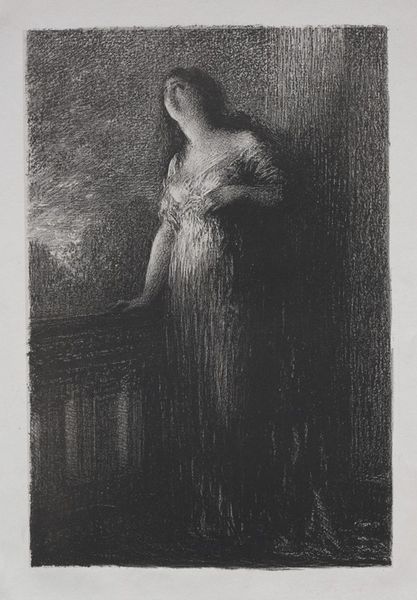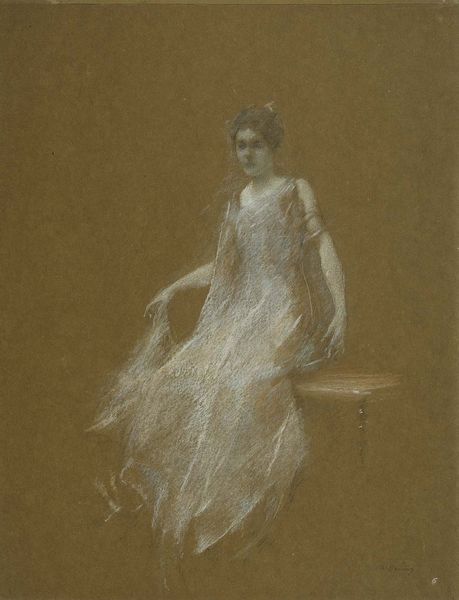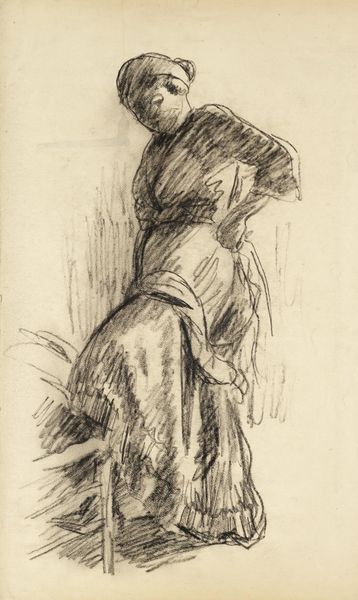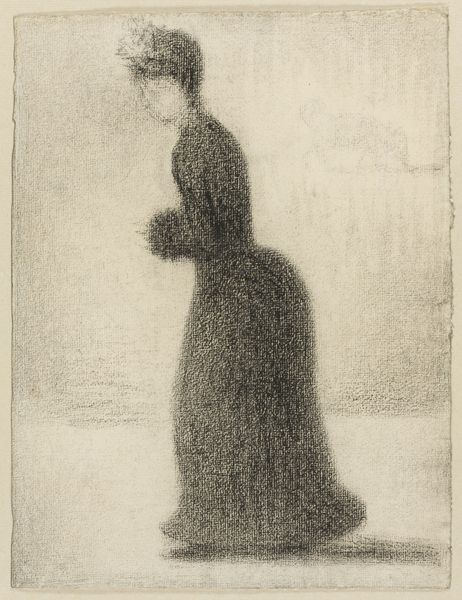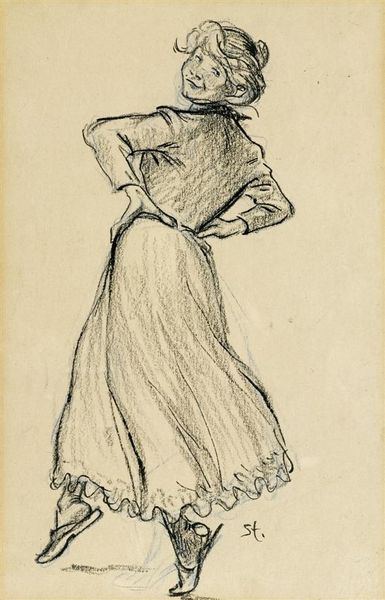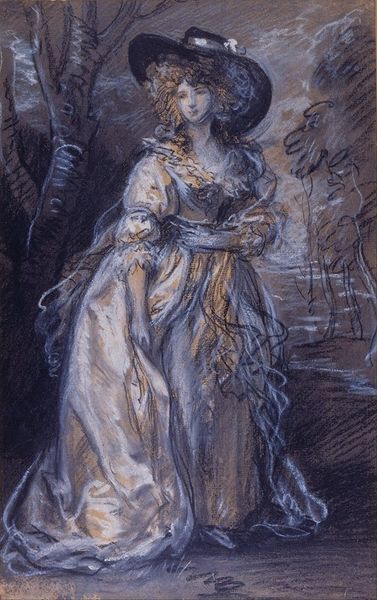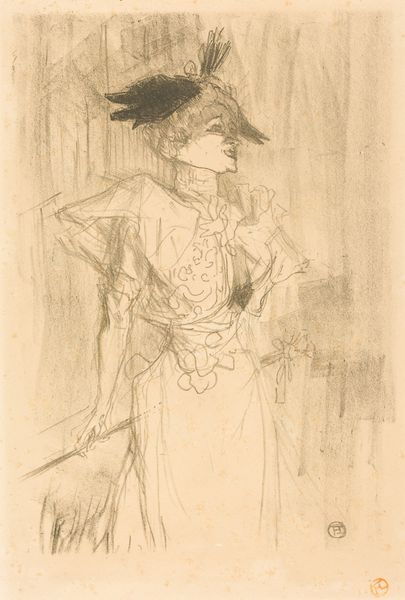
drawing
#
drawing
Copyright: Public Domain: Artvee
Editor: We're looking at "Female Figure," a drawing by Ramón Casas, made around 1900. There's such an ephemeral, ghostly feel to it; she seems both present and disappearing all at once. What stands out to you as you consider this piece? Curator: This work captures a critical moment in the changing representation of women at the turn of the century. Consider the context: Casas, a Catalan artist, operated within a society undergoing rapid modernization, yet still clinging to traditional gender roles. Editor: I see. Curator: The subject's clothing – the large hat, the elaborate ruffled collar – speaks to bourgeois fashion. But observe the unfinished quality of the drawing, almost like a fleeting impression. How might this visual tension between established societal norms and the emerging, independent female identity be read? Editor: Perhaps the sketch-like quality mirrors the shifting and unstable position of women in society at that time? Traditional roles versus new freedoms? Curator: Precisely! Moreover, Casas exhibited widely and was known for portraits of fashionable society. How do you think exhibiting a drawing such as this impacts public perceptions? Editor: Maybe showcasing this drawing style elevates the subject's modernity but perhaps makes her seem unattainable because she lacks solidity, like a mirage. Curator: That’s a insightful. And the fact it is a "drawing" suggests an intentional move away from formal academic portraiture and toward capturing something more intimate. Editor: That makes me consider how even in its unfinished quality, the work holds so much cultural and social commentary. Curator: Absolutely. It really highlights how the visual language of art can reflect, and even shape, evolving societal norms. I will be pondering those new freedoms the artwork evokes for a long time.
Comments
No comments
Be the first to comment and join the conversation on the ultimate creative platform.
